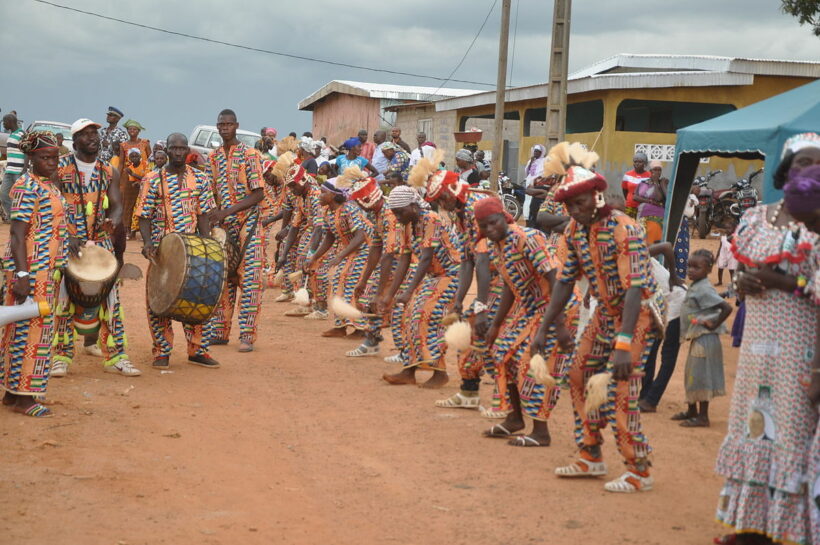I often dance without instruments or music. This may sound crazy, but by the law of correspondence, if I dance with my mind, I will also dance with my body. In this article, we will discuss some traditional African dances. There are many of them and new ones are created every day, just as the universe expands. Although on the walls of Egyptian and Nubian temples we see representations of dances and choreographies, in Kama (Africa) people have been dancing for millions of years. The continent is so vast that we will concentrate on a few regions.
Dances for the deities
Some dances are considered sacred, such as those performed by the Dogon in Mali during the Sigi festival, dedicated to fertility and life, or like the Mapouka in Ivory Coast, where the spirits are called. This dance is still popular today, although for many young people it has lost its original meaning. For African spirituality, there are consciousnesses that act as intermediaries between the creator and the humans, inspiring civilizations with political, spiritual and artistic systems.
How can a spirit or consciousness inspire dances? Once, in the Congo, a wise man explained to me that there are specific dances linked to astronomical phenomena. For example, a pink or spotted moon requires a ritual to decipher the message of the deities. People dance to invoke them and ask for favors of all kinds, with rhythms that are never the same. Based on the rhythm and chants, an initiate can determine which deity is being celebrated and invoked.
Royal Dances
The Mwene (king) being a representative of the creator among men, is entitled to dances dedicated to him as a sign of loyalty and gratitude, such as the Mutumboku in the Kasai region of Congo. Among the Zulus, according to an ancient tradition, tens of thousands of topless girls dance and sing while carrying reeds to their king.
Initiatory dances
For the Masai of Kenya, the Adamu ritual dance is an initiation to the adult world and demonstrates strength and courage through impressive leaps.
Folk dances
The Senegalese dance known as Mbalakh is danced with rapid hip rotations and large jumps accompanied by the sabar, a traditional percussion instrument and talking drums. It is also a musical genre that developed among the griots of the Wolof ethnic group.
In the Mutwashi, a dance of the Luba people of Congo, the hips also move a lot. It originally imitated the sun dance and became popular in the 1980s thanks to the Congolese singer and dancer Tshala Mwana, who died in December 2022..
The rumba is probably the most popular couple dance. Originating in the Kingdom of Congo, which included present-day Congo and Angola, the Kumba was a social dance celebrating fertility and the complementary nature of the sexes. It traveled with the slaves and arrived in Cuba, where the name was distorted into rumba. In his book La Rumba congolaise: Histoire et économie (the Congolese Rumba: History and economics), writer Didier Mumengi traces its historical context and asks how to make it a factor of social and economic innovation.
Dances such as the Amapiano, which originated in South Africa and has made a name for itself throughout the African continent, the Nigerian Kaduna and the solo dances, in which the individual alone demonstrates all his skill, falls into a trance and feels at one with everything.
Combat dances
And finally, how can we forget the Capoeira, which arrived in Brazil with the Bantus deported as slaves, who brought their rituals and culture? A synthesis of wrestling, acrobatics, singing and music, it was used to train for combat with kicks and techniques of attack and defense, disguising its true purpose with elements of dance so as not to arouse the suspicions of Portuguese colonizers.
See all parts of the series “Africa, a history to rediscover” HERE.










